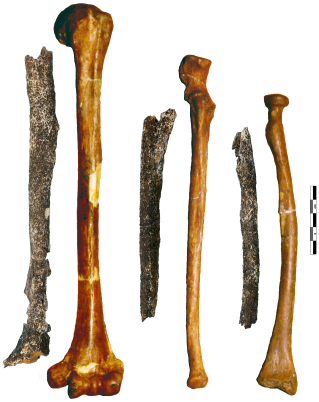Il a déjà un nom : l’homme de Tourville-la-Rivière. Une équipe de scientifiques de l’Institut national d’archéologie préventive et du CNRS a annoncé, jeudi 9 octobre, la découverte des « vestiges d’un pré-Néandertalien » : les trois os longs (humérus, radius, cubitus) du bras gauche d’un individu adulte (ou « vieil adolescent »), de sexe encore indéterminé, vieux de quelque 200 000 ans.

L’article original sur PLOS One
Abstract
Despite numerous sites of great antiquity having been excavated since the end of the 19th century, Middle Pleistocene human fossils are still extremely rare in northwestern Europe. Apart from the two partial crania from Biache-Saint-Vaast in northern France, all known human fossils from this period have been found from ten sites in either Germany or England. Here we report the discovery of three long bones from the same left upper limb discovered at the open-air site of Tourville-la-Rivière in the Seine Valley of northern France. New U-series and combined US-ESR dating on animal teeth produced an age range for the site of 183 to 236 ka. In combination with paleoecological indicators, they indicate an age toward the end of MIS 7. The human remains from Tourville-la-Rivière are attributable to the Neandertal lineage based on morphological and metric analyses. An abnormal crest on the left humerus represents a deltoid muscle enthesis. Micro- and or macro-traumas connected to repetitive movements similar to those documented for professional throwing athletes could be origin of abnormality.





